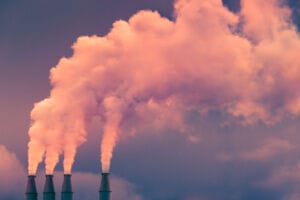 While we may have just begun 2011, many industry analysts predict that the green building and sustainability movement will rebound in 2011 in spite of the continuing economic difficulties in most developed countries. This overall trend runs counter to the thrust of the overall worldwide recession, but this is due to to the overwhelming public and private sector support for the trend at all levels of government globally.
While we may have just begun 2011, many industry analysts predict that the green building and sustainability movement will rebound in 2011 in spite of the continuing economic difficulties in most developed countries. This overall trend runs counter to the thrust of the overall worldwide recession, but this is due to to the overwhelming public and private sector support for the trend at all levels of government globally.
Here are the Top 10 Trends to watch for in 2011 as noted by many within the industry, including fellow green building consultant, Jerry Yudelson:
1. The worldwide green building movement will continue to accelerate as more countries begin to create their own green building incentives and develop their own Green Building Councils. More than 70 countries, on all continents, will show considerable green building growth in 2011.
2. Green building will rebound in 2011 as measured by the new LEED project registrations as a proxy for this growth. “The reduction in commercial real estate building in many countries,” Yudelson said, “was not offset by other sectors such as government, and so the growth rate of new green building projects fell dramatically in 2010.”
3. The focus of the green building industry will continue to switch from new buildings to greening existing buildings. “The fastest growing LEED rating system in 2010 was the LEED for Existing Buildings program, and I expect this trend to continue in 2011,” Yudelson said. “My 2009 book, ‘Greening Existing Buildings,’ documents the strategic components of this trend.”
4. Blue will become the New Green. Awareness of the coming global crisis in fresh water supply will continue to grow, leading building designers and managers to take further steps to reduce water consumption to increase sustainability. This will be done in buildings through the use of more conservation-oriented fixtures, rainwater recovery systems and innovative new water technologies.
5. Green building in the U.S. will continue to benefit from the Obama administration with a continued focus on greening the executive branch. New announcements of a commitment to a minimum of LEED Gold for all new federal projects and major renovations confirm and highlight this macro-trend.
6. Zero-net-energy designs for new buildings become increasingly commonplace, in both residential and commercial sectors, as LEED and ENERGY STAR ratings become too common to confer competitive advantage.
7. Performance Disclosure will be the fastest-emerging trend, highlighted by new requirements in California and other states. Commercial building owners will have to disclose actual building performance to all new tenants and buyers.
8. Certified Green Schools will grow rapidly as part the LEED System. This trend will accelerate as understanding of the health and educational benefits of green schools grows. Already by mid-year 2010, green schools represented nearly 40 percent of all new LEED projects in the U.S.
9. Local and state governments will step up their mandates for green buildings for both themselves and the private sector. We’ll see at least 20 major new cities with commercial sector green building mandates. The desire to reduce carbon emissions by going green will lead more government agencies to require green buildings.
10. Solar power use in buildings will continue to grow. This trend will be enhanced by the increasing focus of municipal utilities as they need to comply with state-level renewable power standards (RPS) for 2015 and 2020. As before, third-party financing partnerships will continue to grow and provide capital for large rooftop systems, such as on warehouses. However, we may very well see a slowing of large solar and wind systems as federal grant support, in lieu of tax credits, is phased out.
While we we have already run in the new year, it will be interesting to see how the green building initiative will take shape in light of ever shifting political realities in Washington, D.C.




